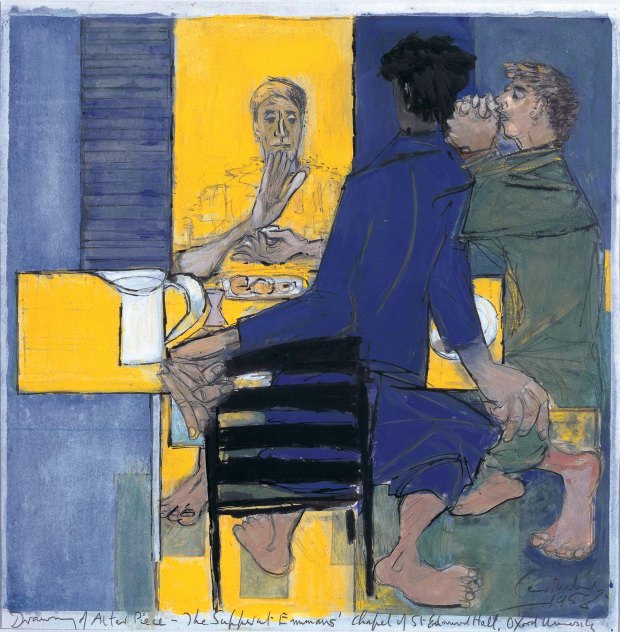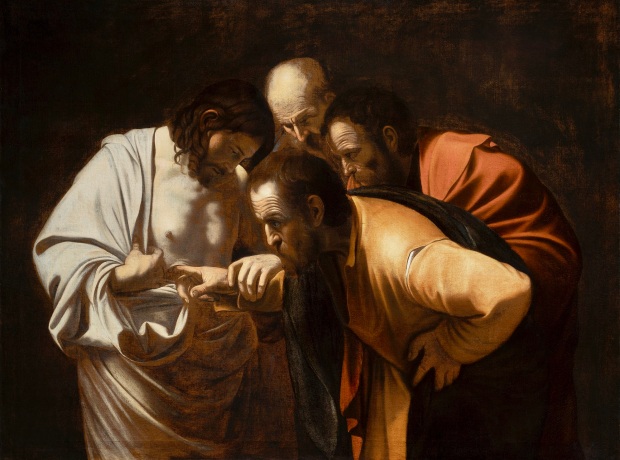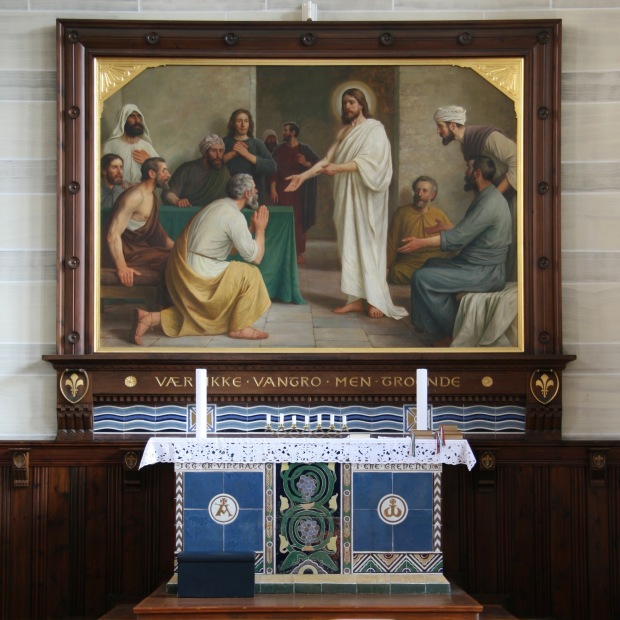
Adapted from a recent wedding homily for my son.
In Sumida River by Night, Kobayashi Kiyochika depicts a man and a woman walking in Tokyo, late on a summer evening. Though from Asia, this 1881 print had a profound influence upon the American painter, James McNeill Whistler. I love how the artist grabs our interest with the glow of red paper lanterns, both near and far. This beautiful image provides a helpful metaphor.
We can see in this picture a reflection of our lives. Hans and Bridget, in your marriage together, you will have many occasions to look out onto life in the world around you and notice others. Your attention may be caught by a parallel to the glowing lights along the far side of the river in this print. Though you may have a light between yourselves, your eyes can be drawn to the multiplicity of other lights around you, and the way they reflect off events and other people. There will be times when you may think others are more happy or fortunate than you are.
Especially when we are young, we tend to think that knowledge, goodness and happiness lie elsewhere, and in others. It’s actually an important part of our journey into maturity to want to attain these things for ourselves. Our admiration for others and their achievements, prompts us to reach further and higher. But this same experience can create an illusion, the mistaken belief that we are of less value.
A similar thing can happen with love, especially romantic love. When we are single, we notice couples walking together in parks and along streets. It seems that others have found their mate, and a kind of happiness that eludes us. Even when we meet that special person, as we get to know him or her and as our relationship matures, we begin to see that not everything goes smoothly. Once again, we are prone to looking at other couples with a misleading idea ~ that they have something more than we have.
But there is another way to see this picture, which applies equally well to you at this point in your lives. I think the artist has deliberately portrayed this couple as older, with the man shown holding a cane. Notice how the paper lantern in his hand, in whose glow they both walk, rivals anything glowing on the horizon. It may be smaller than the great lanterns across the river, but it is near them and within their hands. They have all the light they need, shared between them, as they walk along the river of life.
I have suggested two ways of looking at this print, paralleling two ways of looking at our lives together in this world. In seeing this print as portraying a young couple, we might reflect on the way that things in our lives can seem scarce and limited, and how our attention can become fixed on what seems to be missing. Yet, seen the second way, as portraying an older couple, our hearts can be filled with an awareness of abundance, and how everything we really need is within our reach, if not already in hand.
You may think that I am talking about such things as our natural talents and abilities, and the resources we have been given or have attained through our work. But what I actually have in mind is that great intangible thing we call love. I have in mind not only the kind of love we have for one another, in romance and marriage and for others in our families. I mainly have in mind the kind of love we are given by our Lord, especially when we ask him for it.
The natural love the two of you have for one another is complemented by a supernatural love you will have for each other in marriage. This is a love that is given to you and through you, for your life together. Though some things in your life may become scarce, and even if many things become limited, you will always have all the love you need. Your love will be the light you carry with you as you journey along the path you share together. This kind of love, and this kind of light, are gifts, rather than something you purchase or attain. And so, tomorrow you will have just as much of this love and light to illumine your walk together, as you will have when you are old.
Jesus said, “You are the light of the world!” We are used to Jesus being spoken of as the light of the world. But he tells us that, through his gift, we share the quality of being light for the world. Love illuminates darkened hearts and darkened lives, and love becomes the source of life, true life. Jesus does not want us to hide the light he gives us. Instead, he wants us to display it through how we live, that others might give glory to our father in heaven. Even if we mistakenly think we have so little of this love, and even if sometimes there seems to be more of it in the world around us than in ourselves.
The Church is very wise to appoint this portion of Matthew’s Gospel as a reading for weddings. Not only does our Lord hope that we as individuals will bear witness to his light and love; he intends that our marriages, and our lives together as families, will display the same light.
Hans and Bridget, the love that you share with one another and with Conor and Brady is, at its heart, a gift from God. Let this light that you share as a family, be a light for your path. May it also be a beacon of light for those around you.
Sumida River by Night (1881), by Kobayashi Kiyochika. Matthew 5:13-16 is one of five Gospel readings appointed for The Celebration and Blessing of a Marriage in The Book of Common Prayer. This homily was offered near the great Mississippi River, in Baton Rouge, LA, in May.











